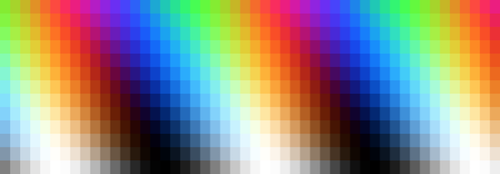The rainbowIterator and rainbowSequence produce a sequence of UIColors. The algorithm uses a Sine wave to calculate the next UIColor in the sequence which creates a nice rainbow effect.
let rainbow = UIColor.rainbowSequence()
The color sequence can be adjusted by altering a set of input parameters:
- frequency: How fast the sine wave oscillates
- phases 1, 2, & 3: Three phases influencing the color output for red, green, and blue.
- amplitude: How high and low the sine wave reaches.
- center: The center position of the sine wave.
- repeat: Whether the color sequence should continue infintely.
For more information on altering the color in the sequence please refer to the article by Jim Bumgardner: Making annoying rainbows in javascript.
let grays = UIColor.rainbowSequence(phase1: 0, phase2: 0, phase3: 0)
let pastels = UIColor.rainbowSequence(amplitude: 55, center: 200)
// Sequences of UIColors with a phase shift of 10°
let phaseShifts: [AnySequence<UIColor>] = stride(from: 120, through: 0, by: -10).map {
let phase = $0.radians
return UIColor.rainbowSequence(phase1: 0, phase2: phase, phase3: phase * 2, repeat: true)
}
The fibonacciIterator iterates trough the Fibonacci sequence.



